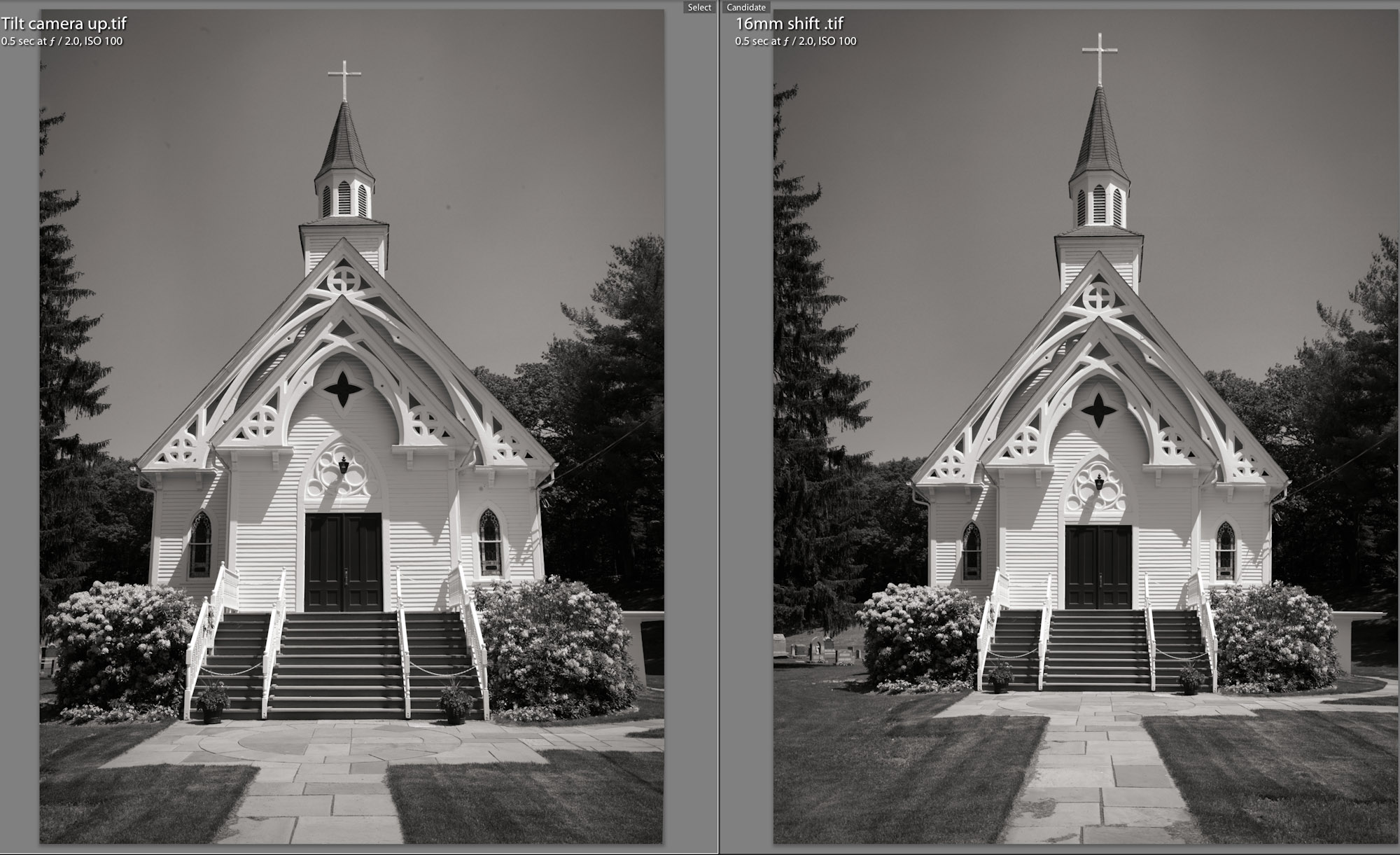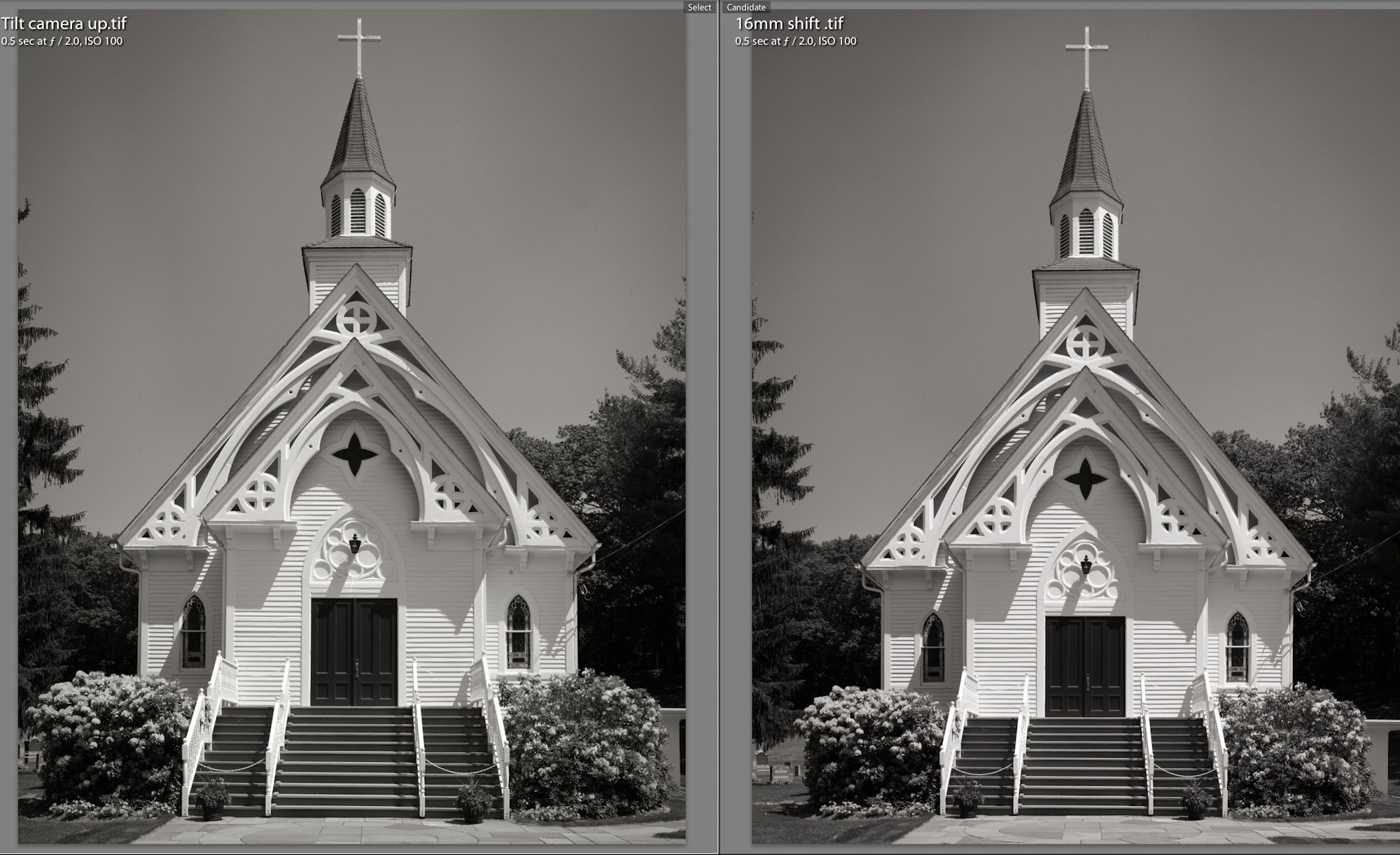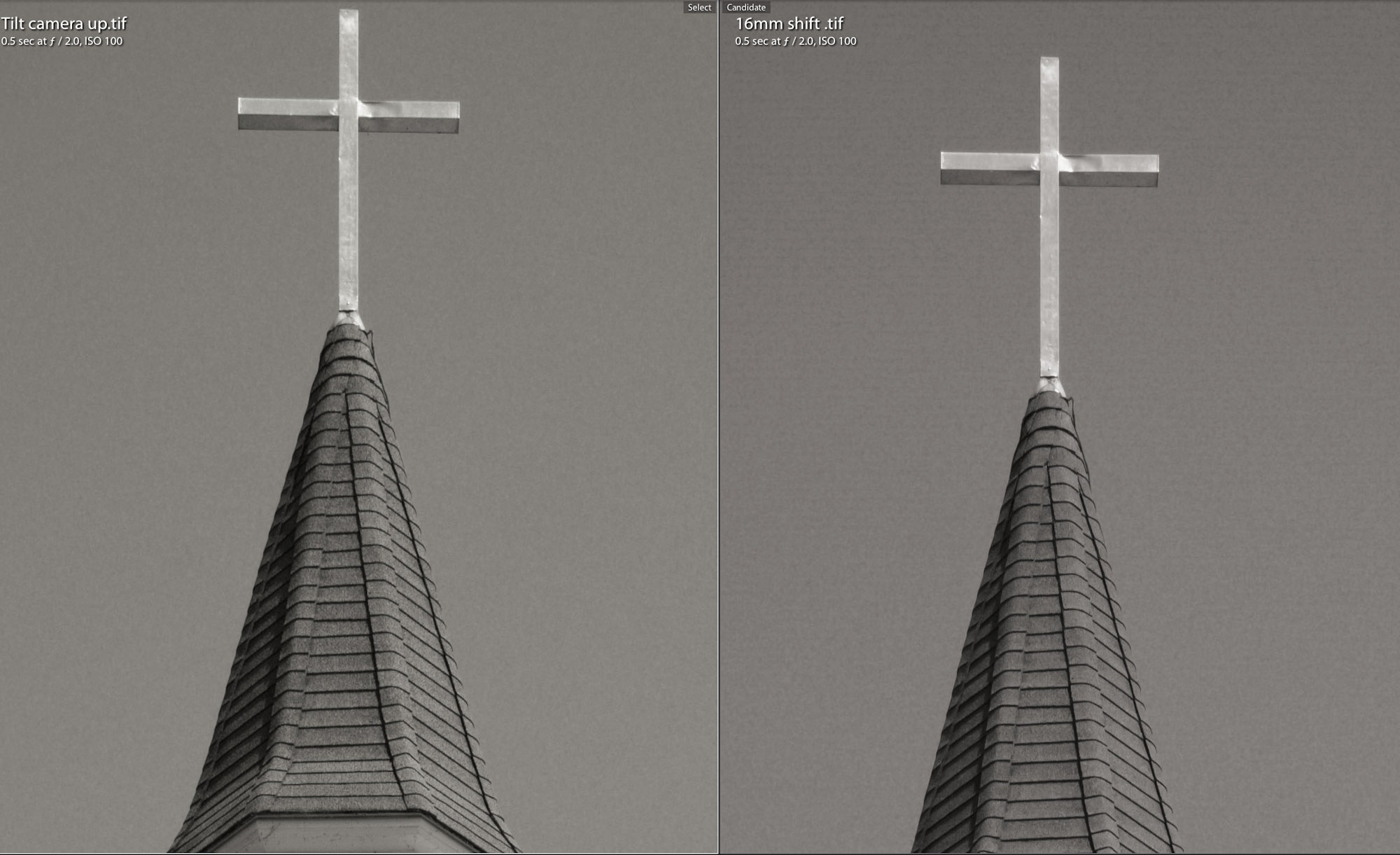The GetDPI Photography Forum
Great to see you here. Join our insightful photographic forum today and start tapping into a huge wealth of photographic knowledge. Completing our simple registration process will allow you to gain access to exclusive content, add your own topics and posts, share your work and connect with other members through your own private inbox! And don’t forget to say hi!
Is the IQ180 the end for Schneider lenses ? compared to Rodenstock
- Thread starter Christopher
- Start date
yaya
Active member
125mm. I've done stitches of 2 vertical frames with it with minimal overlap and very good results that require almost no LCC with the 80MP. The lens was designed for use with scanning backs that have effective sensor size of 72×96 mm. It has a 36mm/ 32mm movement range:How big is the image circle on the 90HR-W? On the SK90 it is 90mm. I like the lens on my P40+. I haven't gotten my new back yet but hopefully soon I can test out my 90 on it.
HR-W datasheet
yaya
Active member
Woody+Jack, I use the 43mm regularly on an Rm2d and have recently written a short essay on LL about my experience with our new special feature made for wide angle lenses. You may find it useful
Woody Campbell
Workshop Member
We're shifting for two reasons: increase file size with "planar" stitching and perspective control. Does a 10% shift threshold mean 5mm? Does 15% equal 7.5mm? With a 40x54 mm back shooting in portrait orientation and shifting to achieve a landscape oriented image it takes 15mm of shift either direction to achieve a 3x4 aspect ratio; 12mm of shift to achieve a 8x10 aspect ratio. 5mm of shift doesn't even make a square frame.I may not be able to prove it wrong, but I can assure you it is moot --: If you shift to where you need 3 stops of LCC correction, then you are well BEYOND the lens' ability to resolve well enough to meet your original A+ IQ standard in the first place...
From what I've seen, Cunin's 10% shift threshold is at least 80% achievableD); however at 15% one needs to test and see based on their own needs and criteria.
Should we be dropping planar stitching as an objective?
I'll do a separate post on perspective control when I have time to upload a few examples.
Woody Campbell
Workshop Member
Here we go on shifting to control perspective. I shot a very nice wooden gothic church in Cornwall Bridge CT last weekend - one of these will be a post to my blog.
I set up my Alpa Max, 60 meg back and 48mm Schneider digitar on a heavy tripod and my cube at a spot in front of the church that gave pleasant framing. All exposures are at f11.
The camera was level and the back orthagonal to the plane of the front of the church. After experimenting a bit it turned out that it took 16mm of lens rise, with the camera level, to frame the church to the top of the cross and some headroom. I recentered the lens and took the same picture, this time tilting the angle of view tilted upward to clear the cross with some headroom. Here's what the images looked like after similar processing.

I then used the perspective correction tools in LR to correct the perspective of the image that was shot tilting up.

Of course the edge of the frame keystoned when I did the perspective correction which forced me to a tight crop, which I copied to the 16mm shift image so they can be compared. The key benefit of using the 16mm of shift (actually rise) is a generally more neutral and pleasing perspective - the LR perspective correction doesn't eliminate the magnification of the foreground (the steps).
This is what 16mm of rise looks like.
Finally crops from the tops of the images (the extreme end of the shift/perspective correction).

The tilted up image has a slight edge in sharpness and is slightly noisier. As noted above the 16mm shift image has the edge in overall look.
Either image with a bit more fussing could get close to A+.
Part of what's happening here is the magic of a fairly modest wide angle. The 48 has a large image circle and as a 48 relaltively modest keystoning as the camera is tilted.
My conclusion is that this that either solution is workable with the right lenses, and that 5mm of shift isn't much in real world applications.
I set up my Alpa Max, 60 meg back and 48mm Schneider digitar on a heavy tripod and my cube at a spot in front of the church that gave pleasant framing. All exposures are at f11.
The camera was level and the back orthagonal to the plane of the front of the church. After experimenting a bit it turned out that it took 16mm of lens rise, with the camera level, to frame the church to the top of the cross and some headroom. I recentered the lens and took the same picture, this time tilting the angle of view tilted upward to clear the cross with some headroom. Here's what the images looked like after similar processing.

I then used the perspective correction tools in LR to correct the perspective of the image that was shot tilting up.

Of course the edge of the frame keystoned when I did the perspective correction which forced me to a tight crop, which I copied to the 16mm shift image so they can be compared. The key benefit of using the 16mm of shift (actually rise) is a generally more neutral and pleasing perspective - the LR perspective correction doesn't eliminate the magnification of the foreground (the steps).
This is what 16mm of rise looks like.
Finally crops from the tops of the images (the extreme end of the shift/perspective correction).

The tilted up image has a slight edge in sharpness and is slightly noisier. As noted above the 16mm shift image has the edge in overall look.
Either image with a bit more fussing could get close to A+.
Part of what's happening here is the magic of a fairly modest wide angle. The 48 has a large image circle and as a 48 relaltively modest keystoning as the camera is tilted.
My conclusion is that this that either solution is workable with the right lenses, and that 5mm of shift isn't much in real world applications.
yaya
Active member
Much of it of course depends on the final desired framing. If you leave a lot of cropping room and require only modest keystoning then a small amount of tilt can be enough. In some situations however the tilt will alter the focus plane so you will have to re-focus or stop down for DOF.
The horizontal lines you are seeing in the shifted image crop can be corrected in C1 if it's a Phase or a Leaf raw file.
The horizontal lines you are seeing in the shifted image crop can be corrected in C1 if it's a Phase or a Leaf raw file.
Woody Campbell
Workshop Member
The focus plane issue wasn't important with this lens at this distance, but clearly becomes important as you get closer. Doing the keystone correction s C1 is a real benefit because it is done in a single pass with the other C1 edits. By the way 20 more megs of pixels and a lower base ISO and more DR would improve the tilted variant above.Much of it of course depends on the final desired framing. If you leave a lot of cropping room and require only modest keystoning then a small amount of tilt can be enough. In some situations however the tilt will alter the focus plane so you will have to re-focus or stop down for DOF.
The horizontal lines you are seeing in the shifted image crop can be corrected in C1 if it's a Phase or a Leaf raw file.
For me (assuming Jack's 10% shift really is 5mm) the issues boil down as follows: Am I better off with 80 megs and little more DR in every image I take, with an acceptable but not perfect solution for when I go on tripod in situations where I care about perspective (by tilting the whole camera); or with 60 megs in every image that I take and the opportunity to get 15mm of shift for perspective control - with some loss of acutance as we reach the corners (at least with the 48 which I believe is typical of the best performance available)?
AND
Am I better off with 80 megs and little more DR in every image I take; or with 60 megs in every image that I take and the opportunity to do planar stitches to get up to 108meg files when I get on a tripod, with a similar acutance issue?
Anyway, I'll be mulling about this.
By 10% I meant 10% of the total IC -- so if a lens has a 100mm IC, you can probably safely shift 10mm in any direction with little resolution loss and limited light falloff. As you get further out, resolution falloff AND light falloff AND distortions AND curvature of field all go downhill geometrically, so massive shifts can become problematic for some images. However, I maintain that it is very often not crucial to the image integrity that corners be "perfect", so this gives significantly more shift freedom for artistic purposes, at least IMHO... On the other side of this coin is with 80MP available in a single cpature, and even more if we stitch, it is probably advisable when in doubt, to shoot a little loose and crop.We're shifting for two reasons: increase file size with "planar" stitching and perspective control. Does a 10% shift threshold mean 5mm? Does 15% equal 7.5mm? With a 40x54 mm back shooting in portrait orientation and shifting to achieve a landscape oriented image it takes 15mm of shift either direction to achieve a 3x4 aspect ratio; 12mm of shift to achieve a 8x10 aspect ratio. 5mm of shift doesn't even make a square frame.
No, at least not as far as I'm concerned! One of the main reasons I like the Acra RM design is the fact that both Rise/Fall and Shift movements are on the REAR standard so planar stitching, and even multi-row planar capture is a breeze. Then combined with the way it imparts tilt (or swing) I can do a horizontal planar capture WITH TILTS enabled, or a Vertical planar stitch with swing enabled. Obviously we cannot cross tilt/swing and shift/rise axis when doing a planar capture.Should we be dropping planar stitching as an objective?
John, that is a big advantage of the Cambo system -- tilts AND swings together on the lens for total control over the PoF. The downside is it's design requires more room so only lenses with longer flange-focal lengths can be mounted for TS. With the Arca, you can theoretically tilt (or swing) even the 23mm lens, but you cannot tilt and swing together with any lens.similar with the cambo (shifts on the back), but you get both T and S on the lens.
I have spent months analyzing the different features and trade-offs on all of the tech cam choices, and the reality is the main line offerings all have their places depending on an individual shooter's preferences.
Woody Campbell
Workshop Member
Interesting - a number of the mid-wide Schneiders might be quite usable at 12mm - planar stitch for a nice 4x5 aspect ratio. For multi row you'll obviously be going to longer focal lengths.By 10% I meant 10% of the total IC -- so if a lens has a 100mm IC, you can probably safely shift 10mm in any direction with little resolution loss and limited light falloff. As you get further out, resolution falloff AND light falloff AND distortions AND curvature of field all go downhill geometrically, so massive shifts can become problematic for some images. However, I maintain that it is very often not crucial to the image integrity that corners be "perfect", so this gives significantly more shift freedom for artistic purposes, at least IMHO... On the other side of this coin is with 80MP available in a single cpature, and even more if we stitch, it is probably advisable when in doubt, to shoot a little loose and crop.
No, at least not as far as I'm concerned! One of the main reasons I like the Acra RM design is the fact that both Rise/Fall and Shift movements are on the REAR standard so planar stitching, and even multi-row planar capture is a breeze. Then combined with the way it imparts tilt (or swing) I can do a horizontal planar capture WITH TILTS enabled, or a Vertical planar stitch with swing enabled. Obviously we cannot cross tilt/swing and shift/rise axis when doing a planar capture.
I'd love to see how the Schneider 72 works out - with a 90mm image circle 12mm of shift would be pressing it a bit under your formula.
By the way with the Max all rises and shifts are done with the back if you buy the doodad that attaches the front standard to the tripod. Tilts are limited to focal lengths of 80mm and longer and can be done in the front or the back, depending on where you put the tilt adapter.
Woody Campbell
Workshop Member
Yes. One of the issues with the Hasselblad back.Is there subtle horizontal banding around the "shifted cross" mag view?
David Duffin
Member
Woody,
Thanks so much for going to the time and trouble to post those examples! A super exposition.
Thanks so much for going to the time and trouble to post those examples! A super exposition.
Please keep in mind that my 10% is a general guide only, so it may vary significantly between lenses and is not offered as anything other than a rough guideline to set expectations.Interesting - a number of the mid-wide Schneiders might be quite usable at 12mm - planar stitch for a nice 4x5 aspect ratio. For multi row you'll obviously be going to longer focal lengths.
I'd love to see how the Schneider 72 works out - with a 90mm image circle 12mm of shift would be pressing it a bit under your formula.
I was aware of that, but that doodad compromises the net portability of the package a bit, doesn't it? The real killer for me on Alpa was the tilts being limited to longer lenses only.By the way with the Max all rises and shifts are done with the back if you buy the doodad that attaches the front standard to the tripod. Tilts are limited to focal lengths of 80mm and longer and can be done in the front or the back, depending on where you put the tilt adapter.
Guy Mancuso
Administrator, Instructor
My thinking as wellWhen i was shooting the blad 40mm was used more than my 28
So i got the 43 for the cambo; that and i will be going full frame, figure i can shift or pano for really wide
Horses for courses
GrahamWelland
Subscriber & Workshop Member
Jack, actually the stitching adapter foot doesn't really affect the portability of the Max much at all. Once you've figured on having a big plate camera body the front mounted foot doesn't really make a lot of difference overall in my experience. If necessary you can also store the body in the bag with the front rise set to it's highest position which minimizes the additional space taken by the foot. Now if we were talking about portability with the viewfinder attached then it's a different matter.... that doodad compromises the net portability of the package a bit, doesn't it? The real killer for me on Alpa was the tilts being limited to longer lenses only.
The ability to tilt wides on the Arca is a nice feature and probably my only complaint about the Alpa actually.
